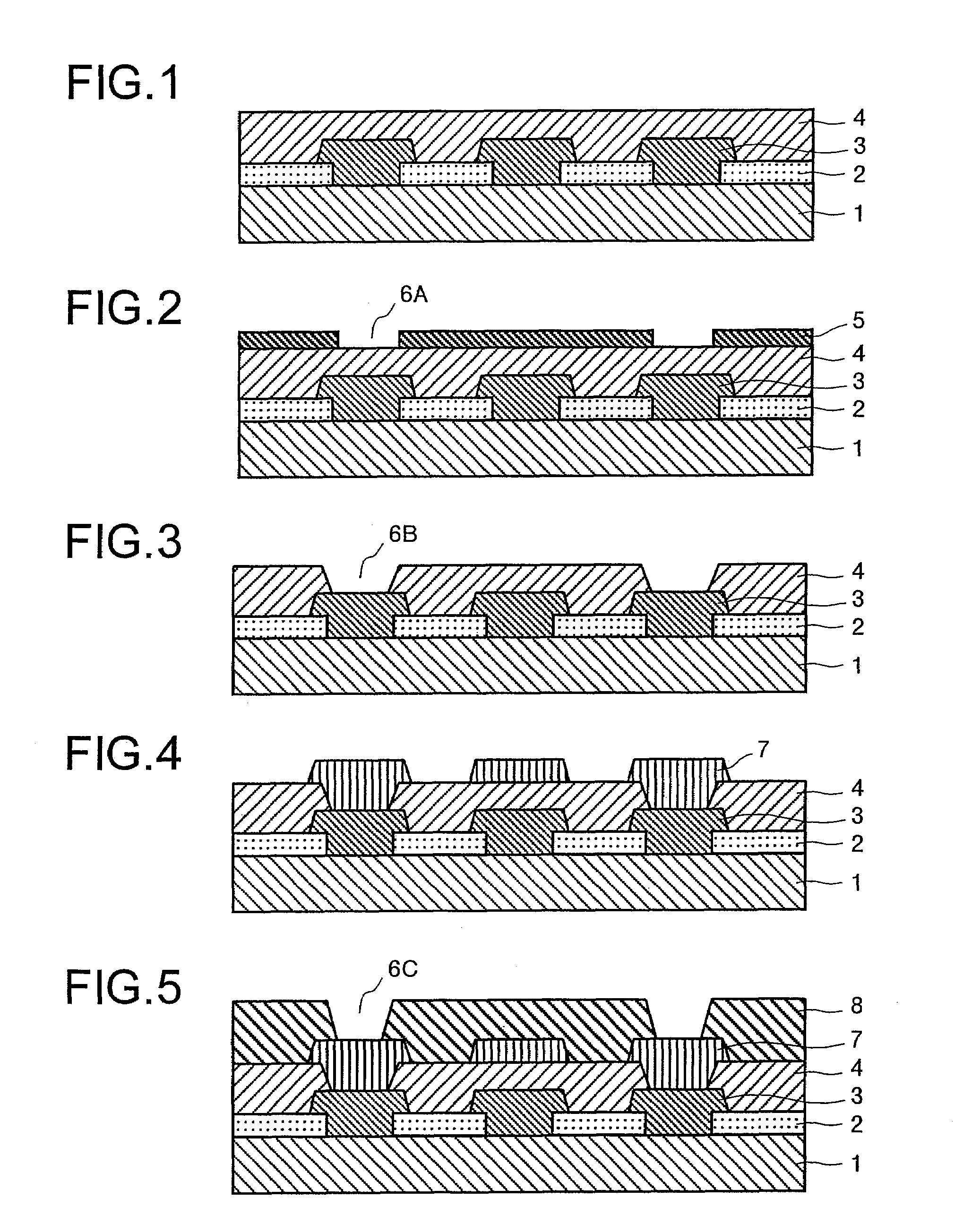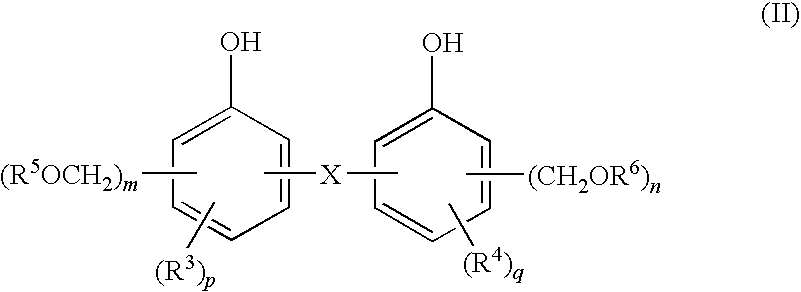Positive photosensitive resin composition, method for forming pattern, and electronic part
a technology of resin composition and photosensitive resin, which is applied in the direction of photomechanical treatment, photosensitive materials, instruments, etc., can solve the problems of low yield in production, poor sensitivity of negative photosensitive resin, and resins unsuitable for multi-purpose use, and achieve excellent heat resistance, and excellent sensitivity and resolution
- Summary
- Abstract
- Description
- Claims
- Application Information
AI Technical Summary
Benefits of technology
Problems solved by technology
Method used
Image
Examples
examples
[0165]The present invention will be explained in further detail with reference to the following Examples. Note that the present invention is not limited by the Examples.
examples 1 to 14
Synthesis Example 1
Synthesis of Polybenzoxazole Precursor
[0166]15.48 g of 4,4′-diphenyl ether dicarboxylic acid and 90 g of N-methylpyrrolidone were changed into a 0.5-liter flask having a stirrer and a thermometer. The flask was cooled to 5° C., and 12.64 g of thionyl chloride was then added dropwise thereto. Reaction was performed for 30 minutes for obtaining a solution of 4,4′-diphenyl ether dicarboxylic acid chloride. Separately, 87.5 g of N-methylpyrrolidone was changed into a 0.5-liter flask having a stirrer and a thermometer, and 18.30 g of bis(3-amino-4-hydroxyphenyl)hexafluoropropane was added to the flask and dissolved in the solution by stirring. 8.53 g of pyridine was added thereto. While maintaining the temperature at 0 to 5° C., the solution of 4,4′-diphenyl ether dicarboxylic acid chloride obtained in the aforementioned procedure was added dropwise thereto over 30 minutes, and the resultant mixture was stirred for another 30 minutes. The solution thus obtained was pou...
synthesis example 2
[0167]Synthesis was conducted under the same conditions as in Synthesis Example 1 except that 20 mol % of 4,4′-diphenyl ether dicarboxylic acid was replaced with cyclohexane-1,4-dicarboxylic acid. The polyhydroxyamide thus obtained (hereinafter referred to as “polymer II”) had a weight average molecular weight of 18,580 and a molecular weight distribution of 1.5, as measured by GPC using a calibration curve obtained from standard polystyrene.
Evaluation of Sensitivity Properties
[0168]100 parts by weight of the polybenzoxazole precursor (the component (a)) was mixed with the component (b) as a sensitizer, the latent acid generator (c) which generates acid upon heating, the compound (d) having a phenolic hydroxyl group, and the solvent (e) at predetermined amounts shown in the Table 1 below. 10 parts by weight of a 50% methanol solution of ureidopropyltriethoxysilane as an adhesion promoter was further added thereto. The resulting solution was subjected to pressurized filtration using ...
PUM
| Property | Measurement | Unit |
|---|---|---|
| temperature | aaaaa | aaaaa |
| temperature | aaaaa | aaaaa |
| temperature | aaaaa | aaaaa |
Abstract
Description
Claims
Application Information
 Login to View More
Login to View More - R&D
- Intellectual Property
- Life Sciences
- Materials
- Tech Scout
- Unparalleled Data Quality
- Higher Quality Content
- 60% Fewer Hallucinations
Browse by: Latest US Patents, China's latest patents, Technical Efficacy Thesaurus, Application Domain, Technology Topic, Popular Technical Reports.
© 2025 PatSnap. All rights reserved.Legal|Privacy policy|Modern Slavery Act Transparency Statement|Sitemap|About US| Contact US: help@patsnap.com



